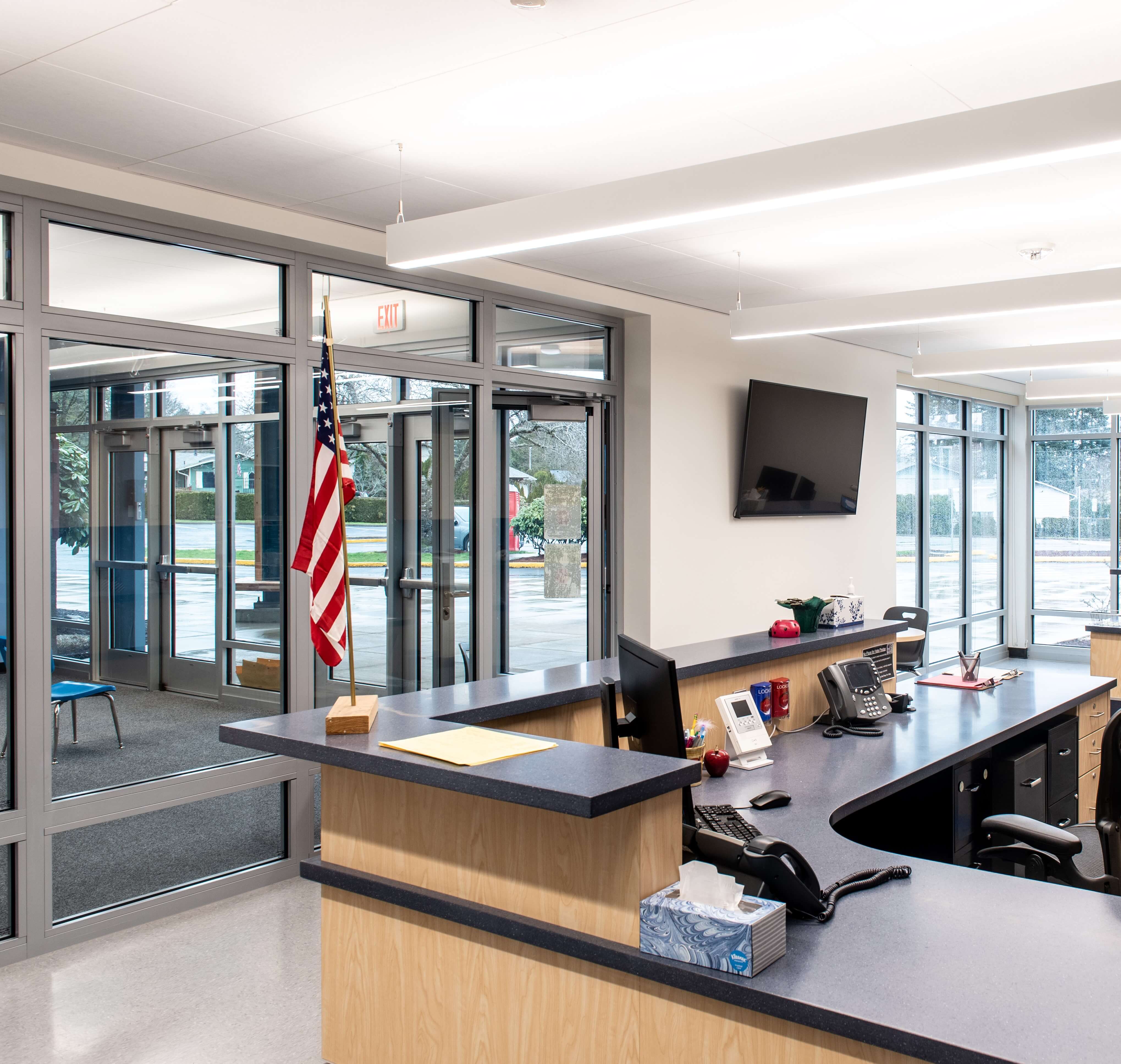Security and Ballistic Glass: How are They Different and Which is Better?
David Vermeulen, North America Sales Director, Technical Glass Products

The challenge with designing safer, more secure buildings is that there are often no officially recognized standards that list what features and materials should be used for enhanced security. While there are some states that require building hardening for specific projects and some requirements for federal buildings, project teams mostly rely on best-practice recommendations from recognized sources like the Partner Alliance for Safer Schools (PASS) and the International Code Council (ICC).
It is important to note that these recommendations usually speak only to school settings. Commercial spaces and other project types may have different constraints and concerns. This can lead to confusion and challenges not only around which design approaches most effectively improve security, but also around which ratings are most appropriate for a project.
For projects that seek to improve security along with other project goals, glass can offer a valuable solution. It can provide several performance capabilities—from contributing to fire-rated design to improving energy efficiency and more. There are also different types of security-rated glazing options in the market. That might make it difficult to know which security-rated glass might be most effective for meeting project-specific goals.
What are the differences between ballistic glass and security glass?
Most materials, glass included, can be tested to determine the degree to which they can defend against a wide range of security threats. At its base level, “security-rated” is an umbrella term that can be applied to multiple types of materials intended to enhance a building’s ability to deter and delay physical threats. Within this category, a material can be ballistic-rated, forced-entry rated, blast-rated and more.
Among these, forced-entry and ballistic-rated glass are the most common security-rated glazing types specified in commercial and institutional projects. While each addresses a different type of threat, both play a critical role in enhancing building safety and occupant protection.
Forced-entry rated glass is designed to delay or deter unskilled or semi-skilled intruders. These glazing systems are tested to see how long they can remain intact within their framing system when subjected to blunt-force weapons and tools. The ASTM F1233 Standard Test Method for Security Glazing Materials and Systems outlines the test method used to evaluate such glazing. It assigns products to one of five class ratings, ranging from Class 1, which simulates a single forced-entry attempt (10 strikes with a ball peen hammer), to Class 5, which involves 41 sequences using various tools, along with exposure to thermal and chemical attacks. The higher the class, the more robust the resistance.
For applications requiring even more stringent performance, such as detention facilities, glazing may be tested according to ASTM F1915. This standard assesses the total time and number of impacts a glazing system can withstand using both blunt and sharp objects. Here, Security Grade 1 represents the highest level of resistance, requiring the glazing to survive 60 minutes and 600 total impacts. Grades 2 through 4 scale down accordingly, with Grade 4 needing to withstand at least 10 minutes and 100 impacts. This rating system allows designers and security professionals to choose glazing that aligns with the specific threat profile of a project.
Whereas, ballistic glass, like Pilkington Pyrostop® BR, defends against active shooters and is rated across eight levels based on UL 752 standards. The UL 752 levels provide data about the number of shots, caliber of rounds and shot pattern that the glass can withstand. While the levels are categorized one through eight, they do not progress linearly; level three is not necessarily less resistant than level six. Instead, they provide more precise information on the type of resistance the ballistic glass provides.
In an active shooter scenario, maintaining the integrity of the entire glazing system after ballistic damage is critical. That’s where ASTM F3561 comes in. It is the only standard that evaluates a fenestration system’s ability to withstand repeated physical assault after being penetrated by multiple gunshots. This layered resistance ensures that even compromised glass can continue to delay entry and protect occupants during high-risk situations.
The role of security assessments in determining which security glass to specify
Just as the levels of ballistic glass provide more precise information, the different types of security glass indicate different defense capabilities. On the one hand, the insight lends some flexibility in terms of designing more secure buildings. On the other hand, it can be difficult to understand which security-rated glazing system would be most appropriate for a specific project.
For this reason, it is encouraged that project stakeholders consult with qualified security professionals to determine whether forced-entry or ballistic-rated glass would satisfy security goals. While these professionals can guide teams in choosing the appropriate rating type, it is important to note that there can be other considerations for creating safer, more secure buildings.
For example, there may also be applications where security goals and code requirements for fire and life safety overlap. However, security-rated components are often plastic-based and burn at rates and intensities that exceed current fire test parameters. This may reduce or entirely negate a system’s fire rating. In these instances, it is crucial that design teams use multifunctional, fire-rated glass and glazing systems to preserve design intent and ensure one form of protection is not compromised for the other. Using a system tested for life safety and security will ensure that the protective glazing will perform as intended.
What are the benefits of using ballistic glass in commercial buildings?
If a security assessment indicates ballistic-rated systems would support a safer, more secure building, then architects have several material options to achieve this level of defense. However, most ballistic-rated systems are fully opaque, which can significantly limit access to daylight, the number of openings within a building and the visual connection within and out of a space. While most of these considerations support occupant wellness, visibility is a key security consideration.
As a transparent material, ballistic glass can also support building surveillance, which can provide occupants with more time to contact first responders and take appropriate action. The ability of this type of glazing to contribute to multiple building goals, including occupant wellness, allows project teams to incorporate in more areas without having to compromise well-studied best practices in building design.
Beyond security, planning for fire and life safety
While deciding between types of security glass may seem challenging, collaborating with security professionals and manufacturers as well as having clear and defined project goals can help. Though important, it is crucial that enhancing a building’s security with glazing systems does not come at the expense of code-driven, fire- and life-safety requirements.
This can require a variety of different considerations. It could mean using accessible and code-compliant locking hardware throughout a building. It could also mean specifying multifunctional, fire-rated glazing systems that use compatible components or are tested as a full system to multiple standards.
The careful specification of multifunctional, fire-rated glazing systems can help project teams meet code requirements, contribute to security goals and support occupant-centered design.


